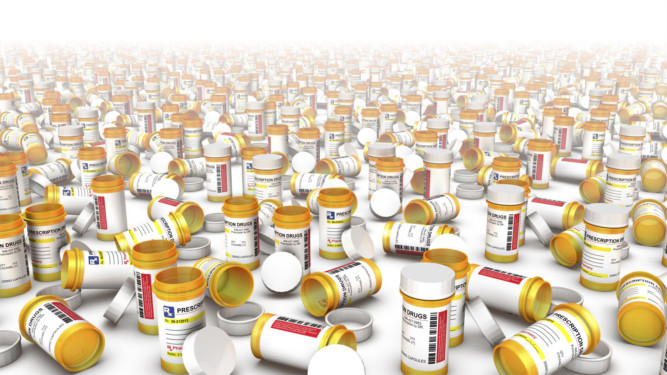
Patients on a daily cocktail of pills are at risk of serious harm according to a new survey.
Experts say pills handed out like sweeties by stressed GPs can have an adverse impact on people’s health.
The study carried out by experts at the University of Dundee found a whopping one-in-five people are on more than five different medications per DAY.
Almost 100 million prescriptions are handed out by high street pharmacies every year, with ground-breaking treatments now letting people live longer, more active lives.
But many patients are not having their medication regularly reviewed and are either on drugs that are no longer necessary or are being prescribed drugs that might adversely interact with something else they are taking.
As such ‘polypharmacy’ the practice of giving patients multiple medications is under the microscope like never before.
The study, led by Bruce Guthrie, Professor of Primary Care Medicine at the University of Dundee, looked at the medical records of 310,000 patients in Tayside. It found that between 1995-2010 the number of people on five or more drugs rose from 11.4% to 20.8%. Over the same time, the proportion on 10 or more drugs rose from 1.7% to 5.8%.
And the proportion of patients being prescribed combinations of medications “with the potential to cause serious harm” increased from 5.8% to 13%.
Patients were more likely to be given more medicines as they got older. The NHS recently issued guidance to doctors and nurses aimed at avoiding problems with pill-popping patients.
But Prof Guthrie said work is needed to simplify the process of checking the medications patients are on, particularly those on repeat prescriptions.
“Polypharmacy is neither right nor wrong, it’s just sometimes problematic,” he said. “For one patient, being prescribed 15 drugs may be right, but five years later, when they are frailer, some drugs will no longer be right.
“Some patients are prescribed drugs such as aspirin for their heart and ibuprofen for arthritis, which can both cause bleeding in the stomach. It’s not that it’s wrong to prescribe these drugs at the same time, but it’s a marker of risk.
“We are not good at reviewing drugs and taking decisions to stop them.”
Prof Guthrie has called for doctors, nurses and pharmacists to carry out more checks on patients to make sure the drugs they are taking are appropriate, and for the process to be less complex.
“The key clinical implication is that clinicians need to regularly review and optimise chronic medication,” he added.
The Royal Pharmaceutical Society Scotland said pharmacists need to play a bigger role.
“Too often patients are in receipt of treatments which, although complying with guidance, do not match their own wishes and health goals,” they said.
Since 2012 the Scottish Government has been working with NHS boards to support clinicians carrying out polypharmacy reviews.
In March there were calls for pharmacists and GPs to collaborate more closely over patient care in England.

Enjoy the convenience of having The Sunday Post delivered as a digital ePaper straight to your smartphone, tablet or computer.
Subscribe for only £5.49 a month and enjoy all the benefits of the printed paper as a digital replica.
Subscribe